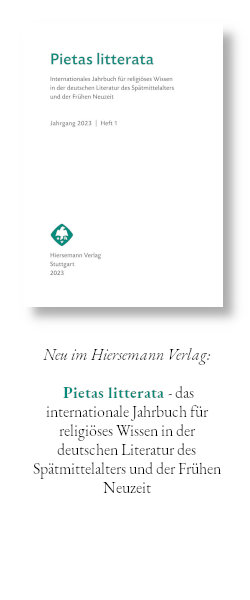Sermo propheticus: Grand Style in the Medieval Sermon from John the Evangelist to Aelred of Rievaulx
DOI:
https://doi.org/10.36191/mjb/2020-55-1-1Schlagworte:
Prophetic speech, Sermon style, Grand/sublime style, Sacred rhetoric/sacrum eloquium, Sublimitas sermonis, Sermo affectuosus, Genera dicendi, Aelred of Rievaulx, Pentecost sermon, Narrative dynamicsAbstract
A style known as ‹grand› or ‹sublime› was reflected on and practiced in early Christianity, the Middle Ages and beyond. This style is theorized most prominently by Augustine in his De doctrina Christiana, followed by Hrabanus Maurus and adapted, with influence from Aristotle and Al Farabi, by Roger Bacon. The grand style has stood in the long shadow of Erich Auerbach’s influential essay on Christian Latin style, «Sermo humilis». Approaching the medieval sermon from the point of view of elevated style opens sermon style to critical study and clarifies the place of the grand style in ancient and medieval rhetorical traditions.
The gospel of John is closely associated with sublimity of style in the traditions of medieval preaching. Claiming the authority of direct communication with Christ, the fourth gospel speaks in a diction and projects a soaring vision commensurate with its source. The grandiosity of John’s gospel, along with the book of Revelation, which the Middle Ages took to be a work of John the Evangelist, legitimized sublimitas sermonis, otherwise criticized as vain and pompous in a line of commentary that descends from St. Paul (1 Corinth. 2. 1).
A genre of sermon (‹Prophetic›) was the special (though not only) medium of grand expression. The elevated style is common in medieval sermons, both occasional, individual passages and complete sermons. A pentecost sermon of Aelred of Rievaulx is illustrative of stylistic grandeur in the tradition of John, and of Aelred’s self-conception as prophetic preacher, and the analysis provides a strong argument for defining the Sublime in the Middle Ages in reference to Judeo-Christian rhetorical tradition rather than classical-Longinian.


